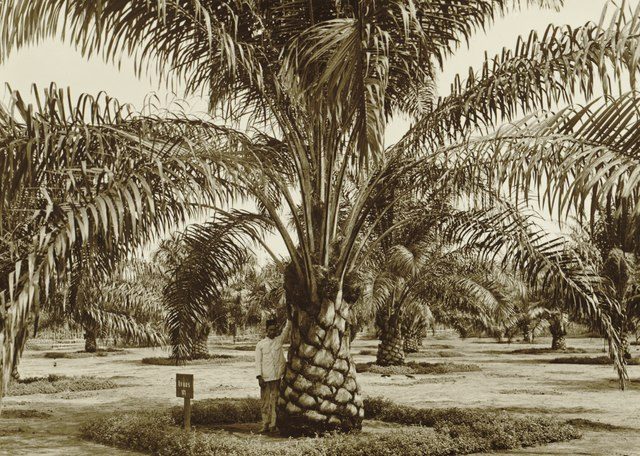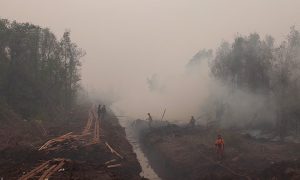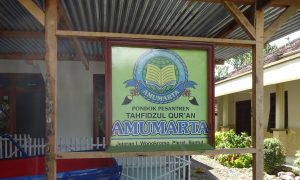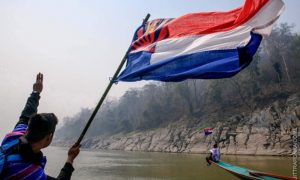Haiven, Max. 2022. Palm Oil: the Grease of Empire. London: Pluto Press.
At the beginning of the nineteenth century, palm oil – the generic term for the different oleaginous substances derived from the African Oil Palm Elaeis guineensis – was only just becoming desirable to European traders. But by the early twentieth century, colonial botanists posted to West Africa were becoming intensely concerned with finding the variety of the oil palm that could offer the highest yield, and thus the highest profits, for this crop that had become central to the industrial revolution. But while local users had complex and systematic naming systems which carefully encoded the properties of different varieties of Elaeis guineensis, these were considered a hindrance by colonial scientists. The (British) Assistant Conservator of Forests for the eastern province of Nigeria concluded in a report:
“The names given by the native to palm fruits are most unreliable; at different periods of development or ripeness of the fruits distinctive names are given them.”
There was thus little recognition by the British that naming systems in Igbo or Efik might reveal the information that colonisers were looking for, and yet at the same time their knowledge was carefully recorded by colonial botanists, whose scientific experiments ended up revealing precisely what local producers had known all along: the most processable palm variety was a sterile hybrid. After further complex encounters that have built on this knowledge over the past hundred years, the palm in its super-productive form has taken over landscapes across Southeast Asia – where the industry has built on systems of unfree labour and the infrastructures that colonisers had already put in place for rubber.
Conflicting epistemologies were thus thrust into co-existence through this one encounter-amongst-many. While local forms of knowledge were simultaneously derided and stolen, their repurposing in the form of colonial science later became central to how palm oil, in its highest yielding form, has been able to infiltrate markets at a global scale.
Today the oil palm is the highest yielding oil crop ever known to exist. As my opening example shows, however, this very fact is due to complex and localised histories and encounters: examining the history of this crop show how it was never inevitable that palm oil would take the form it does today. Historian of palm oil Jonathan Robins argues that “nothing in the ecology or economics of the oil palm created violence; instead the arrival of the oil palm industry exposed the tensions and injustices already present in rural communities. Whether oil palm functioned as a tool for development or for oppression hinged on local and national histories, not on global political actors and economic forces”. Oil palms have been made into what they are today in Southeast Asia and around the world through technical, political, and economic means that are highly locally specific, entangled with diverse lives, environments, histories and material conditions.
Yet despite this specificity, the physical proliferation and the structures of inequality that so often accompany palm oil are also very much a global phenomenon. It is made cheap by a long history of environmental and human abuses that have taken similar forms around the world. Its common cultivation in monocrop plantation form constantly reproduces the violence and “persistent poverty” that has been theorised regarding other plantation contexts around the world, in which worker’s bodies are commodified and rendered disposable, their lives and stories seemingly inconsequential.
In his recent book, Palm Oil: The Grease of Empire, Max Haiven explores this process of how palm oil emerged at the intersection of capitalism and colonialism, creating the inequalities and related forms of environmental destruction that characterise the palm oil industry today. He argues that through tracing the story of palm oil, we can come to understand capitalism as a “form of human sacrifice”. This is a form that “defines itself”, coming to itself mask the causes of its own destruction, making deaths from exposure to poisons, overwork, abuse, and poverty – all of which are associated with oil palm labour – seem as if they are “somehow accidental, incidental, or inevitable”. Most importantly, he points out the racialising effects of this. Haiven draws on secondary literature on the oil palm to build his case, as he himself, has in fact never seen an oil palm (as he states in the book).
The need for consent from indigenous landowners in Indonesia's West Papua oil palm developments.
Cultivating consent: challenges and opportunities in the West Papuan palm oil sector
This is reflected in the book’s reliance on statements regarding both palm oil and capitalist power as magical, uncanny, and cosmological at the expense of examining what may have in fact been highly localized encounters between coloniser and colonised. Processes of magic may be of relevance, but so would have been (and are) the everyday moralities, pressures, encounters, desires, that rubbed alongside technical developments elsewhere, epistemologies from other places, and entrenched economic and political power, violence, and forms of control that were not abstract but highly grounded.
Though Haiven’s urgent linkages between capitalism, colonialism, and palm oil are the strength of the book, the reader may sometimes feel that they miss the subtleties of the human stories that are central to the story. This sets the book in contrast to other recent volumes on the oil palm. Sophie Chao, for example, presents detailed ethnographic cases that draw their theories regarding the oil palm as an entity from the lives and dilemmas of both affected Indigenous Marind communities in West Papua, and workers in the Indonesian palm oil sector. Journalist Jocelyn Zuckerman takes us through highly diverse contexts in which palm oil is found, but centres her work on first hand archival and investigative research. And Jonathan Robins, in his definitive volume The Oil Palm, allows his theories of this substance to grow from his comprehensive accounts of how the oil palm has been made by human actors with diverse aims throughout its history.
Thus, although Haiven situates his work alongside that of anthropologist Anna Tsing, their work is highly distinct. Tsing, focuses on how friction characterises “global connection” in what she calls “zones of awkward engagement”. In her words: “universal claims do not actually make everything everywhere the same”, and though capitalism, science, and politics all rely on claims to and dreams of universality, in fact they can “can only be enacted in the sticky materiality of practical encounters”. Feminist approaches to understanding capitalism have urged the same, being “concerned with the means and mechanisms—the very processes of generation—through which systems and socialities are made”.
Haiven, on the other hand, is concerned with how palm oil might instead—in “greasing the wheels of empire”—have “overcome friction”. Thus we are left not with stories of local frictions and encounters but instead with universalising narratives. In contrast with Haiven’s stated aims of challenging how capitalism (and the forms of human sacrifice it engenders) is made to seem inevitable by the system itself, the book thus may risk making the process of palm oil’s entanglement with capitalist endeavors seem more inevitable than ever.
In a narrative that centres magic and cosmology, there is little room for understanding how and why, for example, palm oil today defies the notions of centre and periphery that so often characterise universalising claims about capital, as the most important recent centres of consumption are not in the “West” but in India and China. We may miss how and why, for example, workers in the palm oil sector in Indonesia might express violent forms of love for their seedlings, or how or why Indigenous communities navigate their feelings of pity for the oil palm, the subtleties of the dilemmas expressed by palm oil boycotters, or the managerial and legal means by which unfreedom is and was governed on Indonesian plantations.
When the intertwinings of palm oil, colonialism, and capital are articulated as all-encompassingly cosmological, we are left questioning what happens in the gaps of such narratives: why attempts by Europeans to introduce the palm to Malaysia may have failed at one time, and succeeded in others, the role Nigerian naming systems played in developing palm oil science in Malaysia, or how in Brazil a substance that was a part of the subjugation of enslaved peoples also became a tool for their survival and resistance. As Sophie Chao puts it, there is a risk of “theory assert[ing] intellectual mastery over the messiness of everyday, lived lives”.
And so Haiven’s narrative provocatively leaves its readers with questions. To my mind, the primary question is methodological: how can the broader structural narratives of capitalism and colonialism—the power and devastation of which Haiven rightly centres—be made to co-exist with more grounded and localised stories in which the frictions that are constitutive of these power structures are made and remade? How can one come to understand palm oil as always both local and global, without offering primacy to one and diminishing the other?
 Facebook
Facebook  Twitter
Twitter  Soundcloud
Soundcloud  Youtube
Youtube  Rss
Rss 



